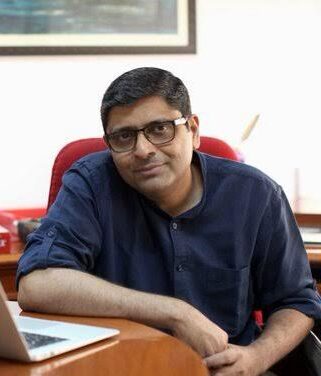POLITICS is like diabetes, most of us inherit it. So is the case with all those young and not-so-young women who have been hitting the streets, shouting slogans, writing graffiti, holding placards and getting detained by the police. The eruption of idealism could not have happened without these young people not having been brought up the way they have been. It is, thus, not just a youthful rebellion against authority, but a considered uprising of the middle classes against a perceived divisive, dangerously communal agenda. Many of the parents of those young women may even have voted for the BJP in the last two elections (as some of them posted on social media), but they had brought up their children to be modern citizens, wanting to be proud of a nation that tries to treat all its citizens as equals. Many do not realise that these parents might have turned against the UPA when their pride in the nation got deeply hurt during the Commonwealth Games fiasco, only to be confronted by an unending series of scandals.
Hence, the protests of these young people are far more significant than those of the professional protesters. The atrocious attack against JNU students shook the conscience of the nation primarily because of the total abdication of responsibility by the Vice Chancellor — their paterfamilias — and the brazen way in which masked outsiders came in droves to ‘teach the students a lesson’ and walked out shouting obscenities while the Delhi Police patiently watched with the streetlights conveniently switched off. But the protests at JNU are not as important as the ones in the streets of Delhi, Mumbai, Bengaluru or Chennai because these are — unlike in JNU, Kerala or West Bengal — not organised by politicians who desperately seek Muslim votes. The professional politicians, even in this frantic melee, are only hoping to fuel the fears of the Muslims to secure their votes and remain in power. They fail to see this as a moment of transformation, the crack of a new dawn.
Muslims constitute around 27% of West Bengal’s population, and in Kerala nearly 45% of the population comprises minorities (Muslims and Christians). This huge chunk of minority votes had even led cynical politicians to sponsor an attack on temple traditions, thinking that the minorities would be very happy to see a Hindu temple getting targeted. Some of these politicians, who even do namaz, with their heads covered, for campaign photographs, are only practising the old identity politics of vote blocks when they oppose CAA-NRC. In fact, they are the biggest hurdles for social integration, always protecting the worst practices among the minorities, patronising their regressive and often criminal priests and vote-contractors. For them the anti-CAA-NRC protests and debates are a godsend to project themselves as Muslim messiahs. This politics is counterproductive and anti-modern.
Those who have come out to register their protests in the big cities are the inheritors of Gandhian nationalism — seeking a composite nation and peaceful coexistence. This is obvious from the portraits of Gandhi and all heroes of the national movement adorning the protest sites in Delhi, Mumbai and Bengaluru. The professional politicians had all along kept Gandhi and anti-colonial martyrs away from their iconography, creating a new myth for the minorities meant only to sharpen the differences, build walls and seal people in silos. Hence, the National Flag, the Gandhi portrait, the martyrs and the Ashfaq-Bismil hyphenation are great points of departure in Muslim politics, if at all one should call it by that name, as is the leadership by women at Shaheen Bagh.
To have a new Dalit leader, by the name of Chandrashekhar Azad, who twirls his moustache like the martyrs for effect, is a throwback to the politics of inclusive nationalism, which appeals to the middle classes. It is wrong to claim that the middle classes, who are mostly upper-caste, are too greedy to make a change. If the middle classes are ready to hit the streets for their idea of an inclusive citizenship, apprehending a national register of citizenship and the possibility of detention centres for minorities and thereby a Nazi State, they are expressing their disgust for an exclusivist agenda and are also offering to share power with the minorities. This possibility is a great opportunity for inclusive politics and a new breed of politicians who would stop using minority voters and vote contractors as a shortcut to power.
It is impossible to expect the cynics among Congress, Marxist or AAP leadership to seize the moment and turn it into a platform for social transformation and a new nationalism. But someone ought to. From the flags, the posters and the slogans, it is clear that the leaderless masses are putting forth a platform to counter the Sangh Parivar’s Hindutva nationalism. The dominant discourse always creates its counter. These masses are hugging the National Flag and singing the Anthem to break away from the silos of identity politics. They are creating a new inclusive nationalism as opposed to Hindutva nationalism, unconsciously recreating the anti-colonial Indian identity shaped by the revolutionaries, the martyrs and Gandhi — the biggest martyr for the cause of the composite nation. Unfortunately, mainstream politicians seem to be oblivious to this grand opportunity.
Congress believes in power by default, as happened in 2004, when people decided to vote the NDA out; the Marxists are happy building a women’s wall with purdah-clad women against temple traditions; Mamata Banerjee is busy securing scared Muslims in vote block silos; AAP has not even ventured to visit the protest sites lest some of its votes swing back to the BJP. There are no takers yet for what is getting built by the protesters, primarily young middle-class women, who are rediscovering Gandhi and his disciples like Maulana Abul Kalam Azad. Muslim women, who wrap themselves in the Indian flag in the biting Delhi cold, are yet again defeating the two-nation theory. They must win.









